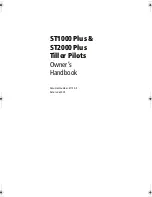
V1.22
Owners Manual SP20-Linex™
- 19 -
Power handling
Although many ways of power handling are used (Program-, Peak-, Peak-program, RMS, AES
and IEC 268-5 Power), only the latter two are real standards and therefore comparable. The
other ways of specifying are more fanciful and therefore not serious. Sound Projects transducer
power ratings are calculated based on minimum impedance (Z-min) and the RMS voltage of the
relevant band-passed
4
noise input signal. This is in harmony with the most frequently used
Audio Engineering Society (AES) power test specification that requires the transducer to operate
at its rated power level for 2 hours with no degradation in performance.
Important note on power handling
The Max RMS power handling values ratings are power values, which the drivers can
sustain for long periods of time without any damage. The listed power handling ratings
are intended as a point of comparison for the sound technician. In practice, the amount
of excitation of the drivers strongly depends on the type of signal, which is applied to
the drivers (e.g. speech, classic, rock, house). To safeguard against driver damage it is
recommended/common practice to always use a limiter on all channels. Limiter
settings have to be determined (each time), according to the specific use of the PA-
system.
Power handling table
1 Cabinet
p4/HF
(50 Vrms long-term)
150 W
16 Ω
p3/MF
(50 Vrms long-term)
300 W
8 Ω
p2/LF1
(50 Vrms long-term)
300 W
8 Ω
p1/LF2
(50 Vrms long-term)
300 W
8 Ω
table 5.5 Max. RMS Power handling
Limiter settings
It is important to realize a limiter only helps partially to prevent speaker and amplifier
damage. In any case it is always best to check and keep track of the peak SPL at one
meter of a cabinet. It must not exceed the specified MAX SPL@1m per cabinet (table
2.6).
Max. SPL@1m
1 Cabinet
5
HF (2kHz)
142 dB
MF (500 Hz)
141 dB
LF (150 Hz)
131 dB
table 5.6 Max. SPL@1m
4
In simple terminology; the above test method confirms that it does not make sense to test a 15 inch “woofer” with a
test signal of 10.000 Hz, or a compression HF driver with a 50 Hz signal. This form of testing and specification is
today regarded as closest to the real thing because music is quite different from a single sine wave.
5
These SPL values are for a single cabinet. A line-array of more cabinets will show higher SPL values at one meter.
Especially low frequencies will be severally louder.
















































